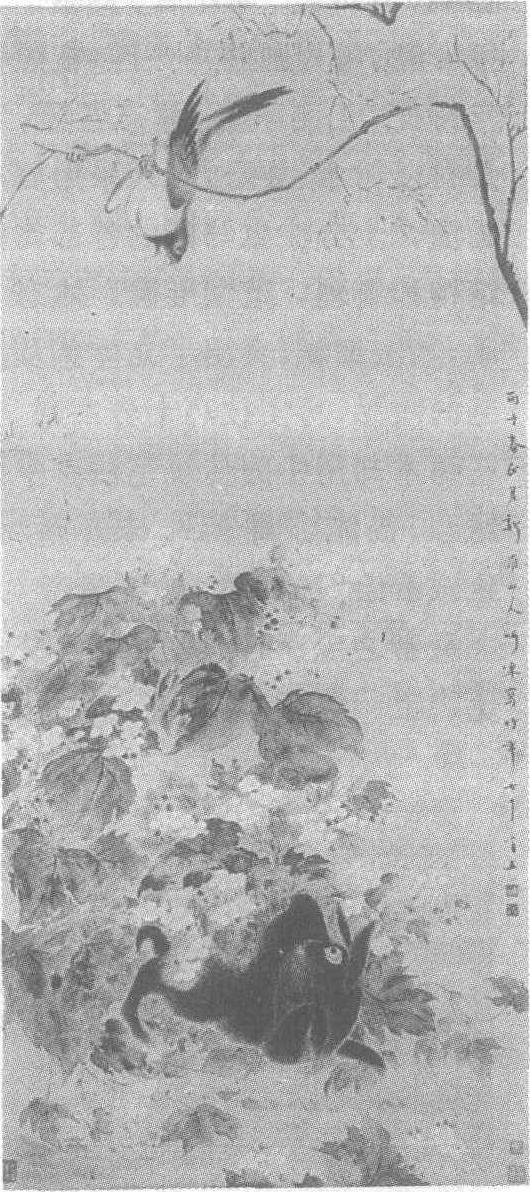华喦海棠禽兔图轴
清。华喦(见《华喦山鹊爱梅图轴》条目)绘。纸本设色。纵135.2厘米,横62.5厘米。北京故宫博物院藏。树上栖一山鹞,蓄势下击,准备突袭秋海棠丛中暗藏的黑兔。用干笔枯墨,山鹞的窥视和呜叫与黑兔紧张的回顾遥相呼应,神情栩栩如生。坡下花叶浓艳生香,构图简洁,刚柔并济,妍雅鲜丽,风格清新秀劲。自识:“丙子春正月,新罗山人呵冻写,时年七十有五。”钤<华喦>、<秋岳>二印。丙子为乾隆21年,即公元1756年。

| 词条 | 华喦海棠禽兔图轴 |
| 类别 | 中文百科知识 |
| 释义 | 华喦海棠禽兔图轴清。华喦(见《华喦山鹊爱梅图轴》条目)绘。纸本设色。纵135.2厘米,横62.5厘米。北京故宫博物院藏。树上栖一山鹞,蓄势下击,准备突袭秋海棠丛中暗藏的黑兔。用干笔枯墨,山鹞的窥视和呜叫与黑兔紧张的回顾遥相呼应,神情栩栩如生。坡下花叶浓艳生香,构图简洁,刚柔并济,妍雅鲜丽,风格清新秀劲。自识:“丙子春正月,新罗山人呵冻写,时年七十有五。”钤<华喦>、<秋岳>二印。丙子为乾隆21年,即公元1756年。
|
| 随便看 |
开放百科全书收录579518条英语、德语、日语等多语种百科知识,基本涵盖了大多数领域的百科知识,是一部内容自由、开放的电子版国际百科全书。